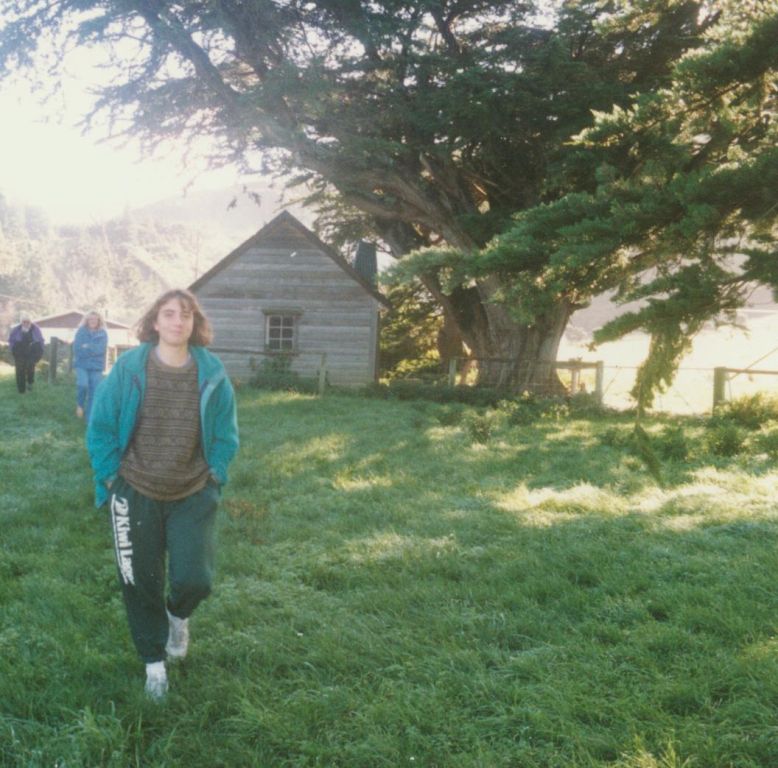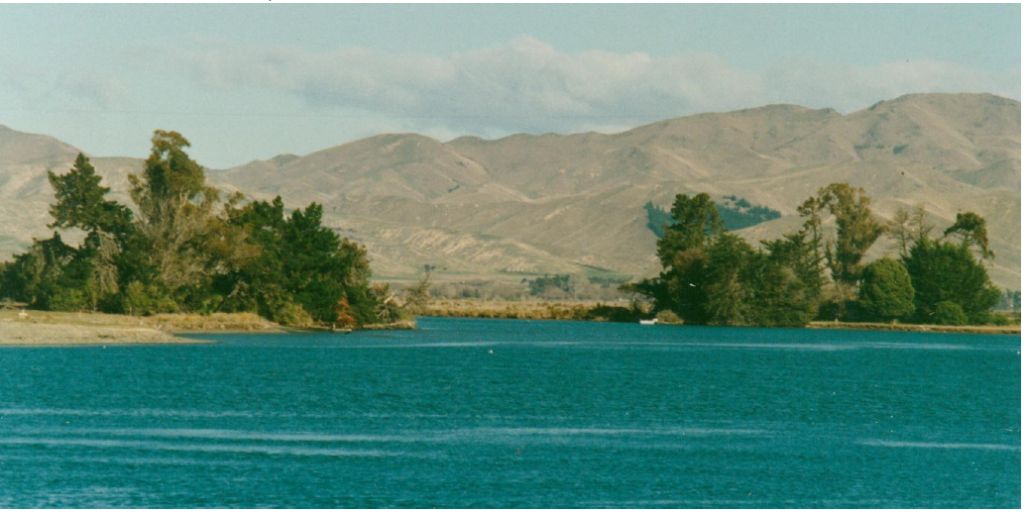Searching for Metapere
It is now more than 15 years since Kate Mitchell published an account of the search for a Māori tupuna in the family, who turned out to be Metapere Kawhe, the wife of John O’Brian/O’Brien.
It is now more than 15 years since Kate Mitchell published an account of the search for a Māori tupuna in the family, who turned out to be Metapere Kawhe, the wife of John O’Brian/O’Brien. Since then, we have been lucky enough to meet many descendants of Metapere and John, particularly members of the extensive families of Rihari and Tiaki O’Brien. We greatly appreciate the family reunions we have been invited to attend at Te Kuiti in the King Country and Mokau in Taranaki, and the warm welcome we have received from the wider O’Brien whānau.
Sadly, John O’Brien and Metapere Kawhe’s family was split in the wake of the Crown’s forced purchase of thousands of acres of Ngāti Toa land in the Wairau – modern-day Marlborough - in the 1850s. Two of Metapere and John’s children, Rihari and Tiaki, returned to farm in the King Country. They left a brother, Frank or Wheki, who remained to work as a shepherd and farm worker in the Wairau, and a sister, Hana or Fanny, who married and settled in Lower Hutt. A third daughter, Ellen or Erena, was thought to have become a nun on the West Coast and we do not know what became of her.
It is a tribute to Kate’s research work that, 15 years later, we really don’t know much more about either John or Metapere than what was recorded in her 1990 study. Sadly, we have no picture of Metapere, and to gain some idea of what she and her friends might have looked like, we have to look to contemporary painted portraits by an enterprising young British artist, George Angas. In the late 1840s, Angas portrayed Ngāti Toa Māori at Kapiti and Porirua and then journeyed south by waka to the Wairau to paint other Ngāti Toa Māori there.
Metapere Kawhe
From historical records and family recollections, we understand that Metapere lived with John in Robin Hood Bay, Port Underwood, for several years in the 1850s, and that she also lived at Wairau Pa beside the lower Wairau River later in the 1850s.
Almost nothing is known about Metapere’s background, although we understand that some of her records had been kept by the oldest son, Frank who, in turn, died in December 1937. Family members believe the records may have been destroyed by one of Frank’s daughters. We believe Metapere came to Te Wai Pounamu and Port Underwood as a young woman with some of her relatives and there seems little doubt that she was of the Ngāti Toa tribe. Entries in the Nelson Māori Land Court minute book for March 1889 record Metapere as being a “Ngati Toa” resident of Wairau Pa in the mid-1850s.1
We believe that Frank O’Brien was born on November 9 1851 at Robin Hood Bay, Port Underwood. Kate’s study records reported dates taken from a Catholic Church register for the births of the other children from the match, the oldest daughter, Hana/h (also called Fanny), a second daughter, Ellen/Erena, and the brothers Rihari/Richard and Tiaki/Jack. So far as we know, John was the only O’Brien adult resident in Marlborough in the early 1850s. He was listed on the 1853 electoral roll as a shearer, and was one of only 44 voters on the electoral roll. Many of those on the roll were absentee landowners living in the New Zealand Company settlements of Wellington and Nelson. Sadly, we have no information about Metapere Kawhe in the Wairau after the birth of Tiaki and Rihari. We have asked Ngāti Toa kaumatua and kuia with knowledge of tribal whakapapa and members of the Kawhe whānau about Metapere. However, they say they do not know of her.
John O'Brien (sometimes spelled O'Brian)
John O’Brien was believed to have been born in Ireland about 18082, but it is not known how he came to New Zealand or when he arrived. He was in Cloudy Bay in the 1840s and the story passed down to us by family members was that he found work in Port Underwood as a whaler.3 John O’Brien was said to have had red hair and a fiery temper to match. He was reputed to have sworn a great deal.
According to descendants, John O'Brien and Metapere Te Kawhe lived together for a while in a small cottage in Robin Hood Bay, the largest of the bays on the western shore of Port Underwood where, in the early 1840s, there was a Māori settlement and kūmara garden. The area was well-known as a source of kai moana, including mussels, kina, and koura (rock lobster).
According to accounts from Frank O’Brien, the family lived in Robin Hood Bay till the mid-1860s, but it may be that John O’Brien and Metapere parted company earlier. John was recorded as living at the Wairau Boulder Bank in the later part of his life, but there is no known information about Metapere being there. There is no record to show that John O’Brien ever married Metapere Kawhe, but they did baptise their children with European names in the Catholic Church while, at a later stage, John also made sure his oldest son married a European woman. This son was Francis (also called Frank/Wheki).
Whaling in Port Underwood in the 1840s was partly shore-based, but largely carried out by ships in deeper water. Gales in the exposed harbour were a constant danger and high hills enclosed the bays, making them gloomy, with relatively little sun. Rainfall was heavy. and rewards from the whaling few. These were probably some of the reasons why, after the birth of Francis, John moved from Port Underwood to the Boulder Bank, a small settlement at the mouth of the Wairau River.
John O’Brien was listed on the 1853 electoral roll as living at the Boulder Bank settlement beside the river, a wild and primitive settlement with four or five mud buildings and several hotels selling liquor. These included premises owned by the Wynens, the MacDonalds, and the Budges. The Boulder Bank was regarded as a lawless place of ill repute. The settlement was situated on the north side of the river, actually across the river from the long tongue of the Boulder Bank. Wairau Pa, where Ngati Toa, Ngati Rarua and Rangitane Maori have lived together since the 1840s was further west and about two km upriver.
John's brush with the law
In the later part of his life, John O’Brien continued to live at times at the Boulder Bank settlement. In May 1877, he offered a 10 pound reward for information on “some person or persons having several times broken into my home at the Boulder Bank”.4 Eight months later, John was recorded as rescuing three Wellington Greek fishermen, whose boat had foundered on the treacherous Wairau Bar.5 One of the men, presumably suffering hypothermia, was covered in warm sand to aid his recovery.
In 1880, when John would have been 72-years-old, he was charged with assaulting a man named Batcheldor with an axe, and also with damaging a punt belonging to men named Thomas Callard and John Gibson. The allegation that John had maliciously damaged the punt was dismissed with costs of 17 shillings awarded against the complainant. The assault complaint had been lodged by a fisherman, Charles Batcheldor, who claimed that the top joint of his left thumb had been fractured in an axe attack by John O’Brien. The Irishman denied the charge.
Batcheldor told the court that he had exchanged words with John, who was armed with an axe and was smashing up a punt. Batcheldor had asked O’Brien to stop breaking up the punt, but the Irishman lost his temper and “made at me with the axe and said he would kill me”. According to Batcheldor, O’Brien had chased him the axe and struck him with it on the thumb.”6
“After O'Brien hit me with the axe, I told him he had broken my thumb and he replied 'Yes,' and that he would split my brains open as soon as look at me,” Batcheldor was reported as saying. Under cross-examination, a companion of Batcheldor, named St Clair Liardi, denied that the pair had been smuggling at the time and, to further questions from O'Brien's lawyer denied that they were persecuting the Irishman so they could get rid of him for 2-3 years in order to build up their smuggling operation. John O'Brien was convicted on the charge and fined £2 with costs of £5-5s.
John O’Brien was recorded as continuing to live at the Boulder Bank until 1867, despite having land elsewhere. However, by 1868, he had moved to a rural block in the Wairau West district. In 1871, he sold land in Ngakuta Bay, Port Underwood, which he had been given as a Crown grant, to a man called Charles Watson, for the sum of 22 pounds. John stayed on his Wairau West section until 1890, the last time he was officially recorded as living there. He probably farmed sheep on the property.
John died on May 3 1897 and is buried at Omaka Cemetery, Blenheim, in an unmarked plot. However, despite 15 years of searching, we still do not know anything about Metapere’s later life. Sadly, we do not know when she died, or where she is buried. We would be very pleased to hear from any whānau members who have information, or suggestions about the search for either John or Metapere.
2006 (updated July 2020)
Story by: David and Judy Mitchell, 2006
Sources
- Nelson Maori Land Court Minute Book, Volume 1, p280.
- The date is calculated from information on John O’Brien’s death certificate. He was recorded as 89 years old when he died on May 3 1897 at Wairau Hospital, Blenheim.
- At least three John O’Briens are recorded as early settlers in New Zealand pre-1850 and we have not been able toestablish which might be the John O’Brien who settled in Marlborough.
- Marlborough Express, May 26, 1877.
- Marlborough Express, February 13, 1878
- Marlborough Express, December 2, 1880
Further Sources
Books
- Mitchell, H & J (2004) Te Tau Ihu o Te Waka: A History of Maori of Nelson and Marlborough, vol.1 The people and the land . Wellington, N.Z. : Huia Publishers in association with the Wakatū Incorporation, pp. 180,202,227.
http://www.worldcat.org/oclc/63170610








